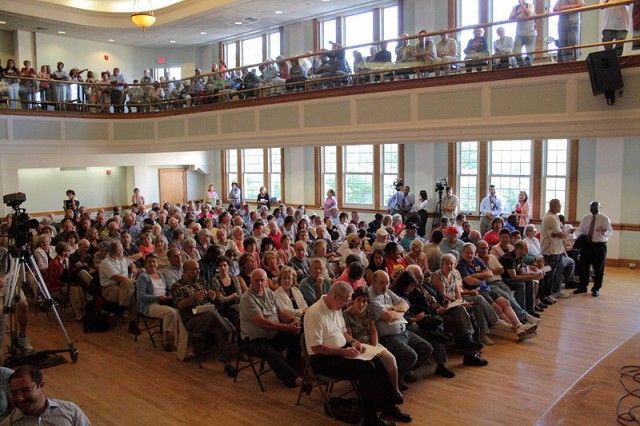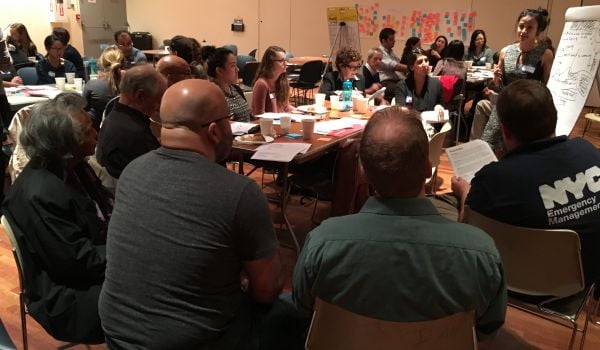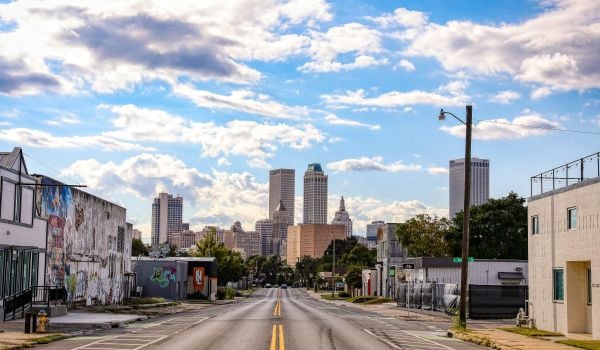The question of how to meaningfully and authentically engage community members in planning and development efforts is both difficult and important. Achieving equitable neighborhood revitalization takes fusing the hopes, dreams, wisdom and creative problem-solving of community members with the expertise, resources and knowledge of planners, community developers, artists, public officials, the private sector and others working to strengthen our communities.
Creating more sustainable solutions that effectively address tough local challenges will take new ways of community engagement while simultaneously building on the power of communities to create, as Bill Traynor puts it, “homegrown, locally owned, action-oriented solutions to a neighborhood’s problems.”
Much of the challenge, as I see it, is based in reflection of what we actually believe about the public and about the role and value of engagement more broadly. There is a distinct difference between assessing people’s opinions or attitudes and actually sharing planning and decision-making responsibilities. There’s a difference between real partnerships and simply asking people to rubber-stamp decisions we’ve already made.
As it is, there too much placation, manipulation and tokenism in our engagement efforts. We ask people if they want a dishwasher or an air conditioner in their apartment (a fair question), but we don’t ask them what kind of affordable housing they want in their community (a different, but similarly good question). We ask people if they’d like a playground for their children without telling them that the other possibility for the site is a health care center. Too often, our efforts are centered on wanting people to participate without giving them the opportunity to make real decisions. We devalue investments in time and relationship building, which often leads to us more easily devalue the contributions and expertise of those we engage.
Sherry Arnstein captures our challenge well, writing in 2006 article that “[t]here is a critical difference between going through the empty ritual of participation and having the real power to affect the outcomes of a process.”
So, how do we do it? How do we move up the ladder of community engagement from disempowered opinion-gathering to collective problem-solving and shared decision-making? I am not an expert and do not pretend to have the three keys, or the four steps, or the two magical ways to achieve this type of engagement by Friday. Plus, the reality is that every community project needs a unique approach based on its context. But here are some principles that I think can guide us in the core of the work and elevate us above the technical realities of any specific situation:
Acknowledge our interdependence and need for increased diversity. We need to understand that the problem we may be trying to solve doesn’t only affect “those people over there” and not “these people over here.” As we become more comfortable with our growing interdependence, the goal of our engagement efforts can be better focused on how, in working together, we draw upon the differing expertise, wisdom and experiences of different kinds of people, sectors and ideas. By bringing together the richness provided by differing perspectives, interpretations and ideas, we begin to capitalize on a growing awareness that diversity trumps individual ability, and that are futures are more connected than we like to believe.
Be honest with the complexity. As soon as we have to work with and even share power with people from different cultures, geographies, educational backgrounds or sectors, the more complicated work begins. Working within this complexity requires us to ask different questions and to value different things. The need to develop more trusting relationships and a shared analysis about our work together may need to trump speed and efficiency. Questions centered on simple data may need to be balanced with questions that require much more of us, like “How it is we want to be together?” and “What is it we want to create together?”
Be comfortable with uncertainty and controversy. Defining problems and coming up with solutions becomes that much harder as we try to understand the complicated ways in which our interdependence is blurring the lines of our previously compartmentalized notions of the world. Answers don’t come as easily, and when they do they come with lots of questions attached.
Neeraj Mehta is a member of Next American City’s 2012 Vanguard class, director of community-based research at the Center for Urban and Regional Affairs at the University of Minnesota and 2011 Bush Foundation Leadership Fellow.
















